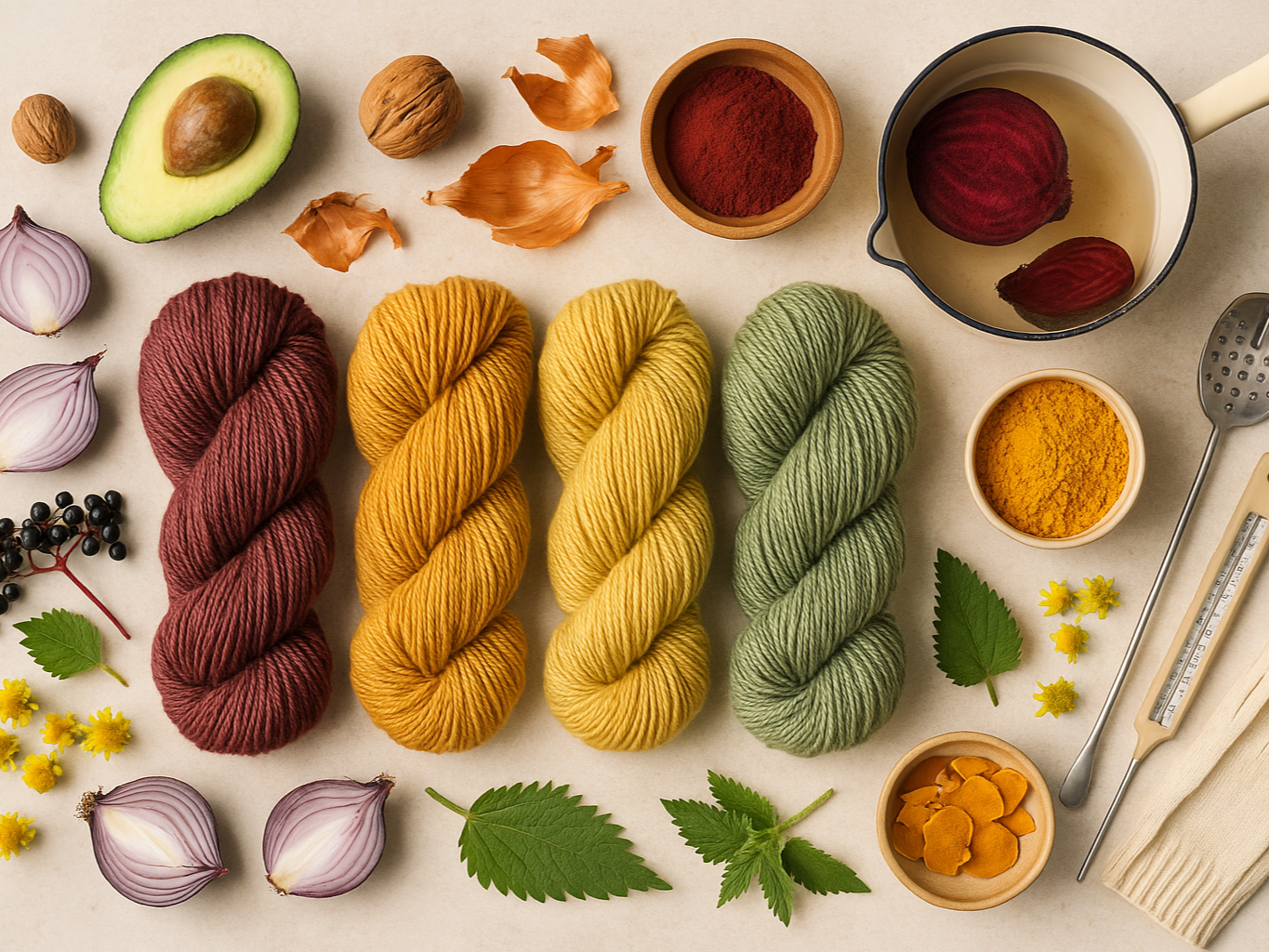Natural Yarn Dyeing with Plants: 10 Gorgeous Colors for Your Handmade Yarn

You love color – but also care about the planet? Then natural dyeing is your thing! This post is a follow-up to my article "Dyeing Yarn at Home – Is It Possible?" and gives you 10 wonderful plants to naturally dye your yarn – complete with DIY instructions, care tips, and a sprinkle of creative curiosity.
🌼 Why Choose Plant-Based Dyes?
Because they are:
-
Sustainable – no microplastics, no harsh chemicals
-
Unique – every skein is a one-of-a-kind creation
-
Natural – like colors straight from a garden journal
🧺 What You'll Need
Basic tools:
-
Enamel or stainless steel pot
-
Sieve, spoon, bowl
-
Gloves
-
Thermometer (optional)
-
Natural yarn (preferably untreated wool)
-
Mordant (e.g. alum or vinegar, depending on the plant)
💡 The more natural the yarn, the richer the result!
🎨 10 Popular Plants for Dyeing
Plant | Color | Special Features:
- Brown onion skins: Color: Golden yellow to rust red | Vibrant and easy to find
- Beetroot: Color: Dusty rose to deep red | Warm but slightly less colorfast
- Avocado skins & pits: Color: Pale pink to brick red | Surprising and trendy
- Turmeric: Color: Bright yellow | Intense, but sensitive to light
- Elderberries: Color: Grayish purple | Needs alum for good results
- Walnut shells: Color: Dark brown | Extremely colorfast
- Chamomile flowers: Color: Soft yellow | Gentle and floral
- Nettles: Color: Shades of green | Best when young
- Hibiscus flowers_ Color: Lilac to pink | Color changes with pH level
- Red cabbage: Color: Blue to purple | A pH chameleon – reacts to acids/bases
🧪 How to Dye Your Yarn – Step-by-Step
Prep your yarn:
Soak in warm water with a little dish soap for 30 min. Rinse well. This helps the dye absorb better.-
Make the mordant bath (optional):
Dissolve 10 g alum + 5 g cream of tartar per 100 g of wool in 2 l water. Simmer yarn for 1 hour (don't boil!). Let it cool down in the pot. -
Create the dye bath:
Chop or crush your dye plants. Simmer in water for 30–60 min. Strain. -
Dye the yarn:
Place the yarn in the warm dye bath. Let it sit for 1–2 hours at a max of 70 °C (160 °F), stirring gently now and then. -
Rinse & dry:
Rinse in cool water. Optionally fix with vinegar. Hang to dry in a shaded, airy place.
🧼 Care & Longevity
Hand wash only
-
Use pH-neutral detergent
-
Colors may fade over time – that's part of the natural charm 🌿
💡 My Tip:
Keep a little dyeing diary – note down plant types, quantities, mordants, and results. That way, you can recreate your favorite colors any time!
📣 Have you tried dyeing yarn with plants?
Come share your experience in our Facebook Group or tag me on Instagram!
#strickenimtrend #naturaldyeyarn #plantbasedcolor #sustainablecrafting #ecoyarn #dyeyarnnaturally
Do you dye by youself?
Yours,
Kathrin ☀️🧶
